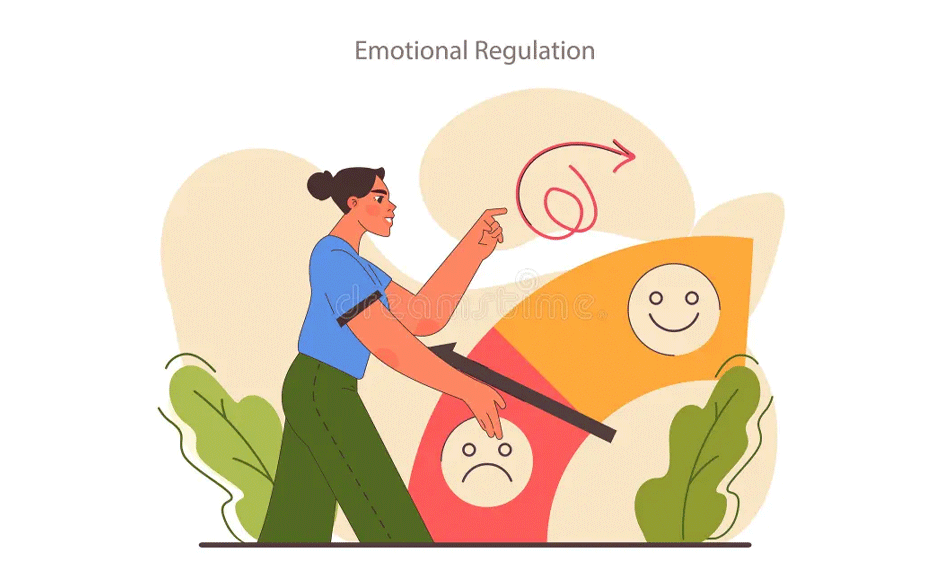- Mumbai, New Delhi, Bangalore
- (+91) 81518 30000
- WhatsApp Now
- contact@vedawellnessworld.com
Addiction is a complex and multifaceted condition that has puzzled scientists and healthcare professionals for decades. While much of the focus in addiction research has traditionally been on the reward pathways in the brain, recent studies have highlighted the crucial role of the prefrontal cortex (PFC) in the development and maintenance of addictive behaviours. Understanding the PFC’s involvement offers new insights into how addiction can be better managed and treated.
The prefrontal cortex, located at the front of the brain, is responsible for a range of higher cognitive functions. These include decision-making, impulse control, emotional regulation, and executive functioning. The PFC acts as the brain’s command centre, helping us navigate complex social situations, plan for the future, and regulate our behaviours.
“The loss of control over drug intake that occurs in addiction was initially believed to result from disruption of subcortical reward circuits. However, imaging studies in addictive behaviours have identified a key involvement of the prefrontal cortex (PFC) both through its regulation of limbic reward regions and its involvement in higher-order executive function (for example, self-control, salience attribution and awareness). This Review focuses on functional neuroimaging studies conducted in the past decade that have expanded our understanding of the involvement of the PFC in drug addiction. Disruption of the PFC in addiction underlies not only compulsive drug taking but also accounts for the disadvantageous behaviours that are associated with addiction and the erosion of free will.” [1]
One of the key roles of the PFC in addiction is its involvement in reward processing. The brain’s reward system is primarily driven by the neurotransmitter dopamine, which creates feelings of pleasure and reinforces behaviours essential for survival, such as eating and reproduction. However, addictive substances and behaviours can hijack this system, leading to excessive dopamine release and the reinforcement of harmful behaviours.
The PFC helps regulate this reward system by evaluating the long-term consequences of actions and exerting control over immediate desires. When the PFC is functioning properly, it can help individuals resist the urge to engage in addictive behaviours by considering the negative consequences. However, in addiction, the PFC’s ability to regulate the reward system becomes impaired, making it harder for individuals to resist cravings and impulses.
“Pathological gambling (PG) shares clinical characteristics with substance-use disorders and is thus discussed as a behavioral addiction. Recent neuroimaging studies on PG report functional changes in prefrontal cortex and the mesolimbic reward system. At the same time, an imbalance between these structures has been related to addictive behaviour. PG patients demonstrated increased connectivity from the right middle frontal gyrus to the right striatum as compared to controls, which was also positively correlated with nonplanning aspect of impulsiveness, smoking and craving scores in the PG group. Moreover, PG patients demonstrated decreased connectivity from the right middle frontal gyrus to other prefrontal areas as compared to controls. The increased connectivity to the cerebellum was positively correlated with smoking in the PG group.” [2]
Addiction often leads to significant changes in the structure and function of the PFC. Chronic exposure to addictive substances or behaviors can result in a reduction of gray matter volume in the PFC, which is associated with impairments in decision-making and impulse control. This means that individuals with addiction may find it increasingly difficult to make rational decisions and control their impulses, leading to a cycle of compulsive behavior and relapse.
“Prefrontal cortex function is associated with drug abuse vulnerability. Impulsive choices and actions involve prefrontal cortex. Prefrontal cortex function and impulsivity differ by age and sex. Prevention and treatment interventions may be enhanced by activating prefrontal cortex.” [3]

The PFC also plays a critical role in emotional regulation and the stress response. Stress is a major trigger for addictive behaviors, and individuals with addiction often have heightened stress responses and difficulty managing negative emotions. The PFC helps modulate the stress response by communicating with other brain regions, such as the amygdala, which is involved in processing emotions.
In addiction the communication between the PFC and the amygdala can become disrupted, leading to an exaggerated stress response and difficulty regulating emotions. This can result in increased vulnerability to relapse, as individuals may turn to addictive substances or behaviors as a way to cope with stress and negative emotions.

One of the most challenging aspects of addiction is the high rate of relapse. Even after periods of abstinence, individuals with addiction are at risk of returning to their addictive behaviors. The PFC plays a crucial role in relapse prevention by helping individuals maintain self-control and make decisions that support their recovery.
Interventions that target the PFC, such as cognitive-behavioral therapy (CBT) and mindfulness-based approaches, are effective in strengthening the PFC’s functioning and reducing the risk of relapse. These therapies help individuals develop better coping strategies, improve decision-making skills, and enhance emotional regulation.
“The nucleus accumbens (NAcc), which has long been implicated in goal-directed behavior, plays a critical role in the relapse prevention circuit, the prefrontal cortex (PFC) appears to process the events that directly trigger relapse: exposure to acute stress, cues previously associated with the drug, and the drug itself. Present electrophysiological data from PFC illustrating how the hedonic, motor, motivational, and reinforcing effects of cocaine can be analyzed at the neuronal level. Our preliminary findings suggest a role for PFC in processing information related to cocaine seeking but not the hedonic effects of the drug.”[4]
The prefrontal cortex is a key player in the brain’s response to addiction. Its role in reward processing, decision-making, impulse control, and emotional regulation makes it a critical area of focus for understanding and treating addiction. By strengthening the PFC’s functioning through targeted interventions, individuals with addiction can improve their chances of achieving and maintaining long-term recovery.
Understanding the intricate relationship between the prefrontal cortex and addiction not only sheds light on the underlying mechanisms of this condition but also opens up new avenues for effective treatment and prevention strategies.